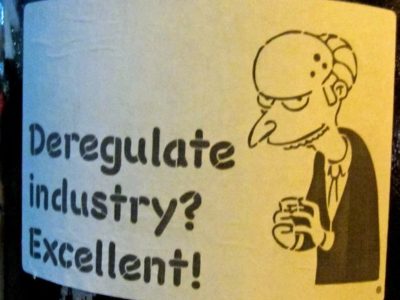Obama’s Section 111d Plan Has Support From George H.W. Bush’s EPA General Counsel, Utility Executives
E. Donald Elliott calls EPA’s approach
When President Obama’s Environmental Protection Agency releases its Clean Air Act Section 111(d) regulations to control greenhouse gases emitted by the electricity sector on Monday, we can expect howls of protest from the usual suspects: Congressional Republicans, industry groups representing big coal interests, even some coal-state Democrats. But the Obama approach is already receiving praise from less predictable quarters. E. Donald Elliott, the EPA General Counsel from 1989-91 under the first President Bush, calls the approach, based on what he’s heard, “promising.” The general parameters of the proposed rules apparently include giving states wide leeway to craft their own plans; allowing energy efficiency to be used to meet the new standards; and encouraging states to join already existing cap-and-trade programs. In a comment to my earlier post about the legal basis for the rules, Professor Elliott wrote the following:
Limiting Greenhouse Gas emissions from existing power plants is the next logical step after the Supreme Court and other courts have upheld EPA’s authority and obligation to address this issue. A system-wide approach provides needed flexibility and reduces costs, as well as encouraging investment in lower-emitting generation. EPA has wisely left the states a lot of discretion rather than mandating specific measures as some had wanted….
We don’t yet know all the details of the President’s approach, but what I have heard sounds promising. I have been an advocate of system wide approaches, going back to time I was General Counsel of EPA 1989-1991 under President George H.W Bush as well as in my academic writings.
It’s also important to recognize that the state cap-and-trade programs that the Obama regulations embrace, California’s cap-and-trade program and the Regional Greenhouse Gas Initiative, both began with strong support from two prominent Republican governors, then-California Governor Arnold Schwarzenegger and then-Massachusetts Governor Mitt Romney.
Even owners of coal-fired power plants have expressed support for EPA’s proposal. Anthony J. Alexander, president and chief executive of FirstEnergy told the New York Times this week that allowing states to opt into cap-and-trade programs is a good idea: “By trading on carbon credits, we’ll be able to achieve significantly more cuts at a lower cost.” The company has power plants in the Midwest and MidAtlantic states. The vice president of environmental services for America Electric Power, owner of 11 coal-fired power plants, said about EPA’s plan: “We view cap and trade as having a lot of benefits. There’s important design considerations that would have to be factored in, to consider each state’s circumstances. But we think it’s definitely worth looking at. It could keep the cost down. It would allow us to keep coal units running for a more extended period. There are a lot of advantages.”
So take the inevitable barrage of claims that the President has unleashed a war on coal after the rules are released on Monday with a very hefty dose of skepticism. When environmentalists, utilities, and thoughtful Republicans all agree that the rules offer a promising, cost-effective approach to cutting electricity emissions, EPA has done its job well.






Reader Comments